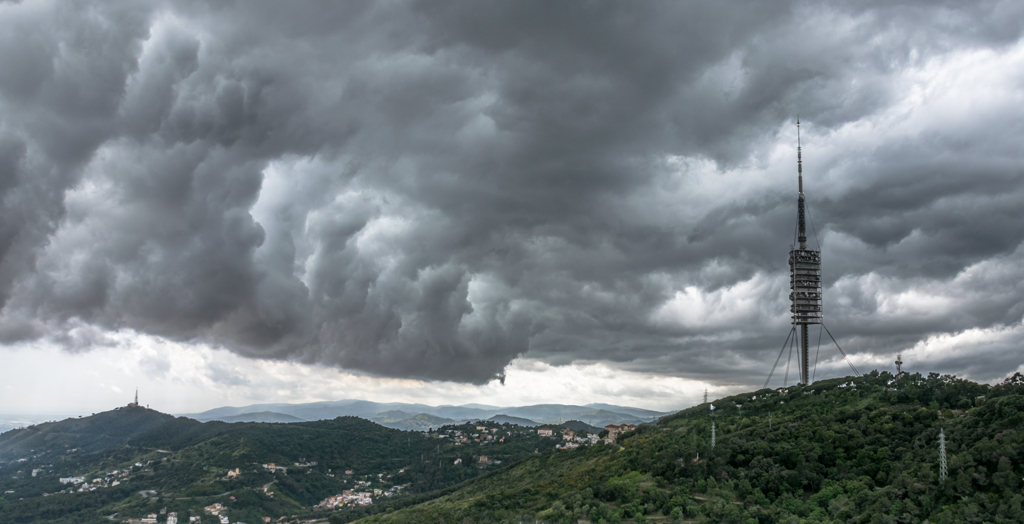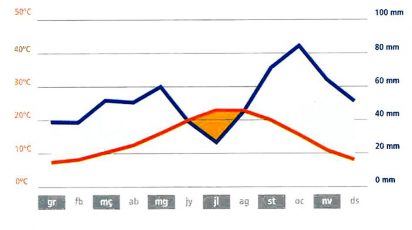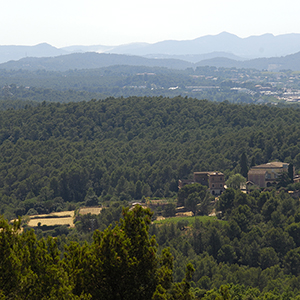Some 10,000 years ago, ice from the last ice age was in retreat and the climate gradually became milder. The eastern sector of the Iberian Peninsula and the entire Mediterranean coastal zone began to experience new, singular climatic conditions which have remained until the present day: the Mediterranean climate.
Collserola lies fully in the area of Mediterranean influence, characterised by mild winters without extremes of cold, and summers that are hot and dry with little or no rain. The weather of these seasons is determined by the Azores anticyclone, and the stormy transition periods (spring and autumn) produce highly concentrated, irregular rainfall, both in the same year or from one year to the next.
In spite of the foregoing generalities, it is evident that Collserola enjoys the existence of microclimates, in other words, significant local climatic variations. Several factors are influential in this phenomenon. These include the topography of the area, the thermoregulatory effect of the sea, altitudinal variations, the degree of insolation of the slopes, vegetation cover, and so on. All of which means that in winter there can be temperature differences of more than 10º C between one spot and another.
According to data from the Fabra Observatory l’Observatori Fabra (432 m), the average annual temperature is around 14º C. Winters are not very cold, with a mean temperature that generally does not fall below 5º C, and summers register an average of around 21º C.
Rainfall data indicate that the average annual total is relatively high, reaching 621 mm, with two wet periods: autumn (October, 831 mm) and spring (May, 60.4 mm) and an extremely dry summer (July, 10.6 mm).
Data collected over the last ten years at the Consortium weather station indicate an average annual temperature of 14.1º C and average annual rainfall of 526 mm. From May to September, water loss through evaporation exceeds precipitation, above all in July and August, when the fire risk is at its peak.








